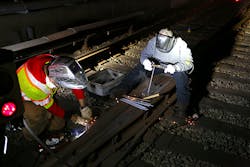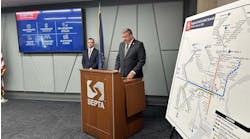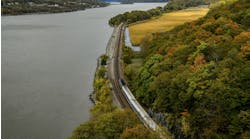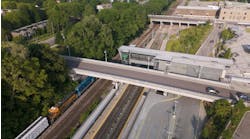The job of welder at the Bay Area Rapid Transit requires manual dexterity and mental agility; it’s an age-old craft that is important in the modern-day rebuilding of BART.
The American Welding Society marks National Welding Month in April to recognize the “skilled welding professionals working to build the structures and products on which the American economy depends.”
Nick Rosales and Orlando Lozano are BART welders who took members of the BART communications team behind the scenes one night to get a better look at this important job — and one that BART is currently hiring for.
Their shift began at the Oakland Maintenance Shops, which are buzzing with activity at midnight as crews get their work orders and fan out across the system. Rosales and Lozano are assigned to work near 12th Street/Oakland on an interlocking, the signaling apparatus and tracks at a junction or crossing that prevent conflicting movements among train paths.
Rosales has worked as a welder at BART for 23 years and Lozano has worked as a welder at BART for two years.
Lozano, who has worked as a welder at BART for two years, says the job requires a laser-like focus on safety, both that of workers and for the ultimate safety of the riding public.
If you’ve ever been on a train that feels like it’s bumping along a section of track, that may be a job for a welder. They work to smooth out uneven sections, using tools like a hand-held grinder and different types of welding equipment depending on the job. At the Oakland interlocking, Rosales and Lozano trade off doing stick welding, also known as shielded metal arc welding, which uses a fixed-length electrode and electric power to join different metals.
Melissa Jordan is the senior web producer with BART.
Read the complete post, which published 4/11/18, on www.bart.gov at www.bart.gov/news/articles/2018/news20180410.



